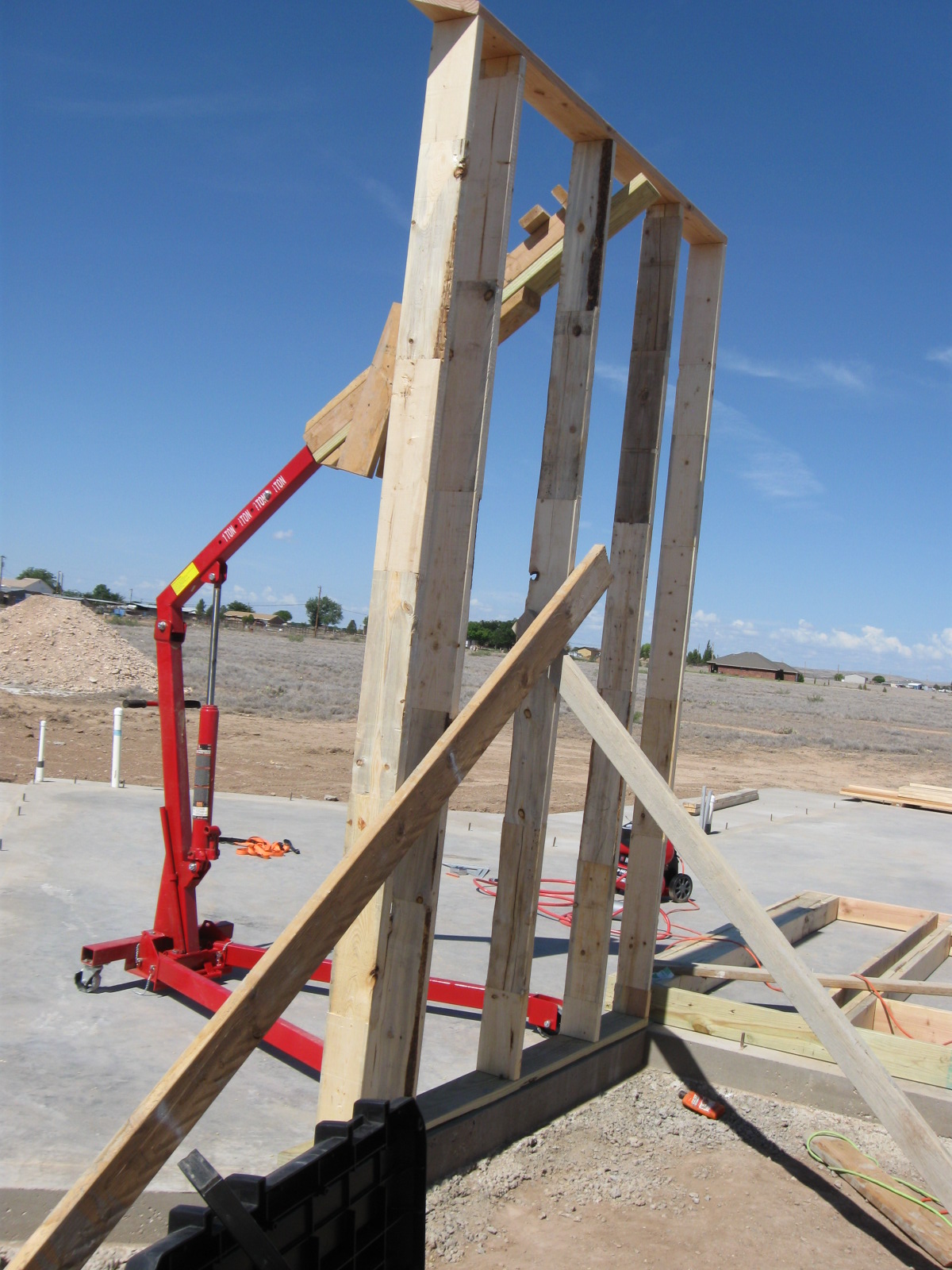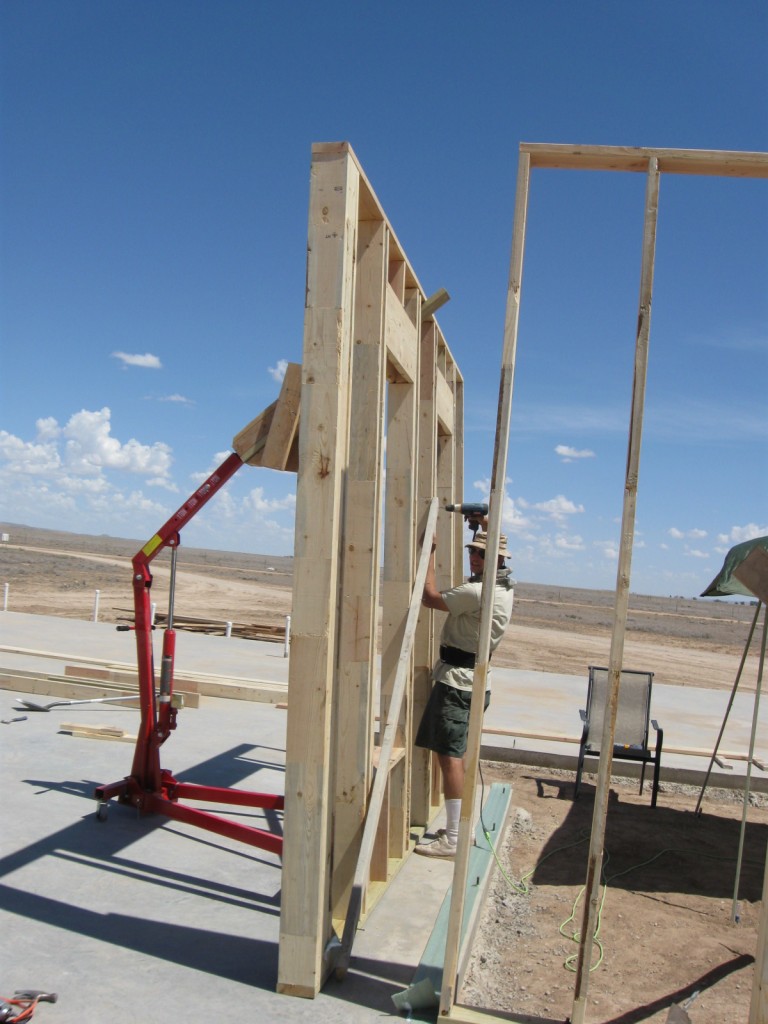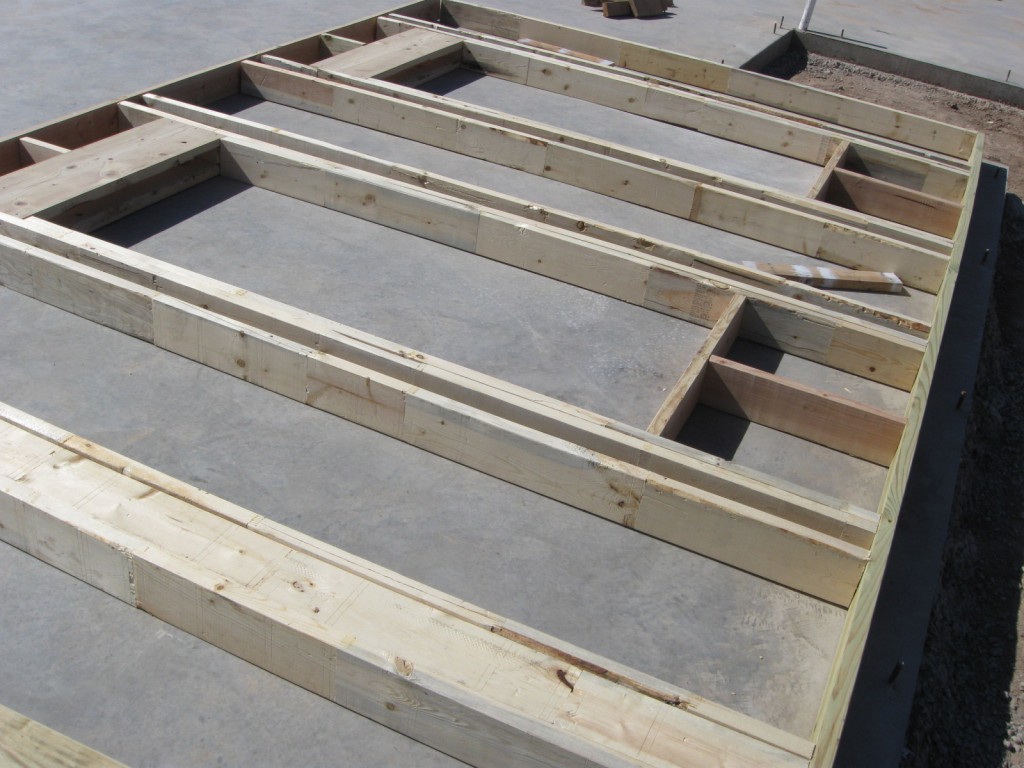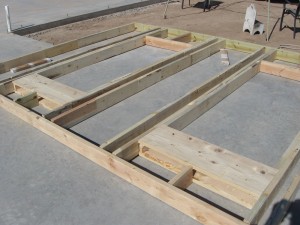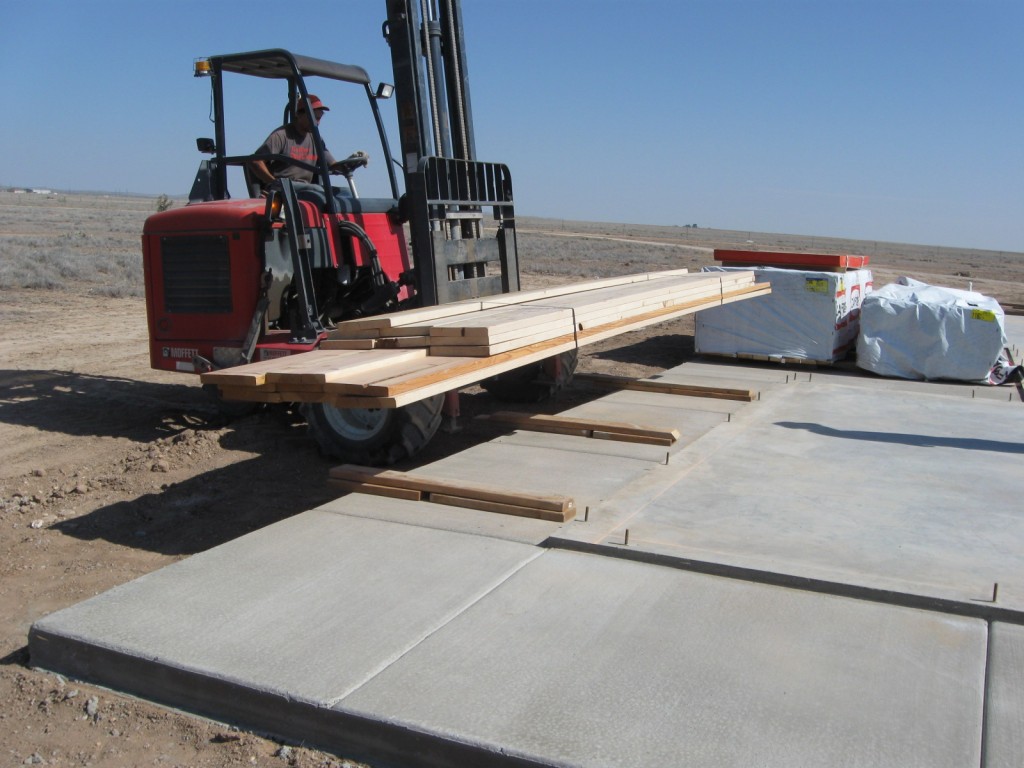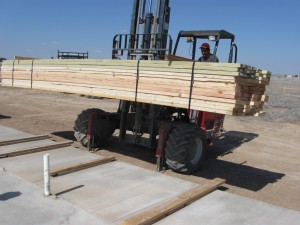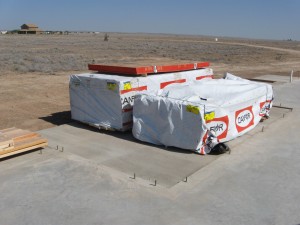Since we decided to do as much of the framing as we can ourselves, the question about how to lift those heavy wall sections came into play. We decided to try out the use of our engine hoist with an extension to see if we can get some mechanical help. Thinking that we’d like to try it out on a small section of framing first, we used it very successfully on a small section of wall on the front of the house. After preassembling the wall section on the concrete pad, we were able to lift it into place using our engine hoist, positioning the wall onto the foundation bolts and then securing it with braces.
Before lifting the wall into place, we put down a bit of caulk and foam sill sealer.
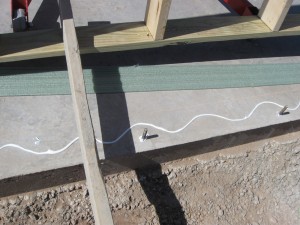

Then, using our engine hoist, we lifted the wall section into place…
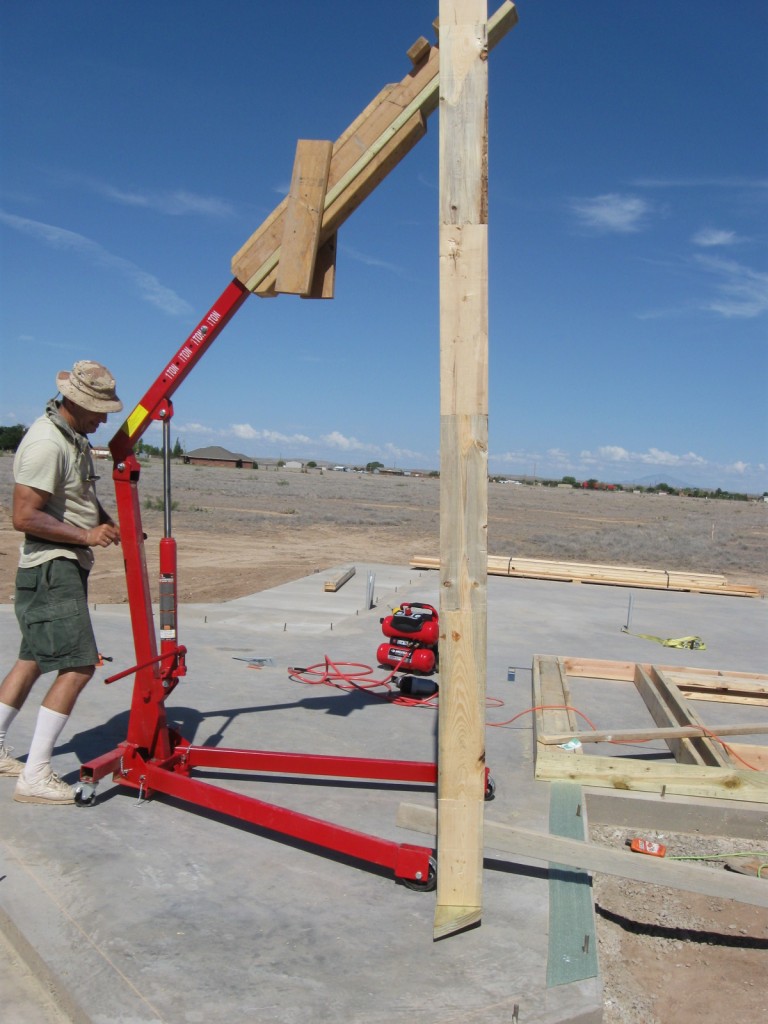
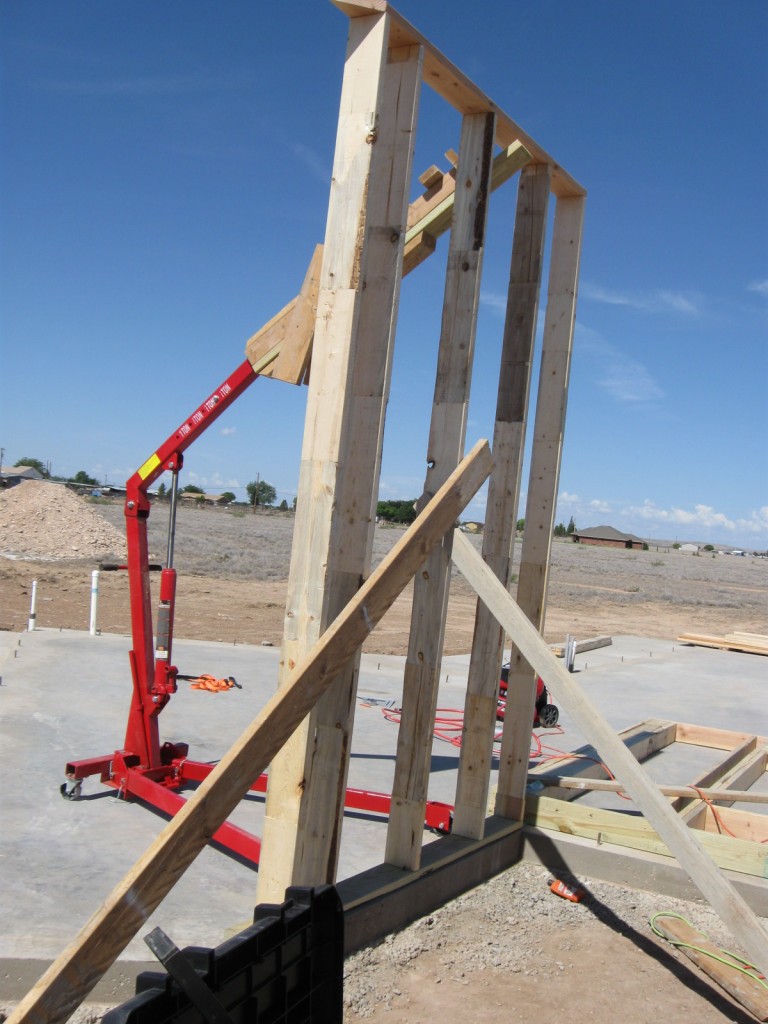
For a larger wall section, however, additional support must be made to the frame so that the top plate does not come apart due to the weight of window headers, etc.
(hmmm, do you think this is the sad voice of experience?)

